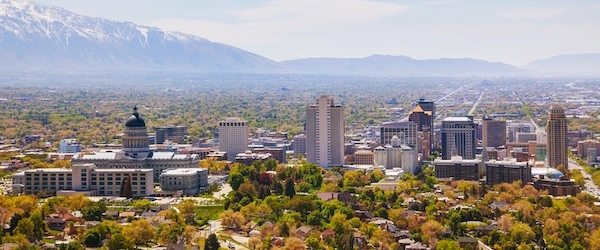Polycentric Development: How the Built Environment Affects Travel Behavior

NITC research led by Reid Ewing of the University of Utah, examining impacts that the built environment and development patterns have on transportation, has produced a number of journal articles in the past year. Three 2021 articles highlighted below each focus on different aspects of the body of work, which revolves around polycentric development and trip generation.
A May 2021 article in the Journal of Transport Geography estimated a vehicle ownership model that contributes to our understanding of vehicle ownership and improves the accuracy of travel demand forecasts. "The built environment and vehicle ownership modeling: Evidence from 32 diverse regions in the U.S.," authored by Sadegh Sabouri, Guang Tian, Reid Ewing, Keunhyun Park and William Greene, draws on findings from the NITC project Key Enhancements to the WFRC/MAG Four-Step Travel Demand Model.
Two main outcomes of this paper are:
- The number of vehicles owned by a household increases with socio-demographic variables and decreases with almost all of the built environmental variables. For the urban planning and design practices, this finding suggests that car shedding occurs as built environments become more dense, mixed, connected, and transit-served.
- Researchers used both count regression and discrete choice models, and the results suggest that count regression models have better predictive accuracy. The model developed in this study can be directly used for travel demand modeling and forecasting by metropolitan planning organizations.
In August 2021, Yehua Dennis Wei, Weiye Xiao and Yangyi Wu published a paper in Applied Geography examining the differences between morphological and functional polycentricity in the Wasatch Front Region. "Trip generation, trip chains and polycentric development in metropolitan USA: A Case Study of the Wasatch Front Region, Utah" analyzes trip chain behavior using employment data and a functional perspective. This article emerged out of the findings from the NITC project Reducing VMT, Encouraging Walk Trips, and Facilitating Efficient Trip Chains through Polycentric Development. Key findings include:
- Walking-friendly built environments are still a critical concern in generating trip chains within urban centers.
- Job opportunities and amenities are critical to increasing functional polycentricity.
- Public transit is an important travel mode to connect urban centers and outer urban regions, and could help reduce vehicle miles traveled (VMT).
- Results suggest that the Wasatch Front Region is still dominated by a single urban center, rather than being polycentric, reflecting the reality of many U.S. metropolitan regions.
Finally, in October 2021, Sadegh Sabouri published "Assessing polycentric development in terms of trip chaining efficiency" in the journal Cities. This paper investigates trip chaining efficiency in 28 U.S. regions, comparing three different types of tours, i.e., tours that are within a center, tours that are partially inside a center, and tours that are completely outside a center. This paper, too, is based on the project Reducing VMT, Encouraging Walk Trips, and Facilitating Efficient Trip Chains through Polycentric Development. Some highlights from the article:
- Travel tours within a center are associated with higher walk, bike, and transit mode shares.
- Tours within a center are associated with lower car shares and hence, lower VMT.
- Hybrid tours have incorporated more sustainable modes compared to the tours that were generated entirely outside a center.
- The differences among tour types, and effect sizes, are larger for walk and car shares than bike and transit shares.
The National Institute for Transportation and Communities (NITC) is one of seven U.S. Department of Transportation national university transportation centers. NITC is a program of the Transportation Research and Education Center (TREC) at Portland State University. This PSU-led research partnership also includes the Oregon Institute of Technology, University of Arizona, University of Oregon, University of Texas at Arlington and University of Utah. We pursue our theme — improving mobility of people and goods to build strong communities — through research, education and technology transfer.
